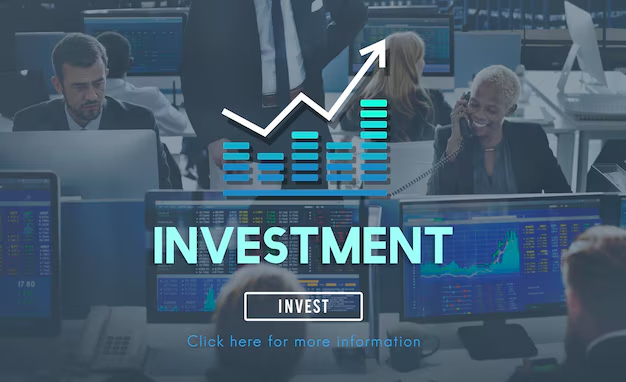Understanding ETFs: What You Need to Know
Exchange-Traded Funds, widely known by their acronym ETF, have transformed the investing world, offering accessibility and flexibility to both seasoned investors and beginners alike. If you're new to investing or simply exploring different financial instruments, understanding ETFs can be a step towards diversifying your investment portfolio effectively. This guide unravels the intricacies of ETFs and provides practical insights into their workings and benefits.
📊 What is an ETF?
ETF stands for Exchange-Traded Fund. This financial instrument combines elements of stocks and mutual funds to create a versatile investment option. Here's how it breaks down:
Exchange-Traded: Like stocks, ETFs can be bought and sold on major stock exchanges throughout the trading day, allowing real-time pricing.
Fund: Similar to mutual funds, ETFs pool investor money to purchase a diverse portfolio of assets, such as stocks, bonds, or other securities.
The unique combination of these features offers the liquidity and flexibility of stocks paired with the diversification of mutual funds, providing investors with a strategic advantage.
🌐 How Do ETFs Work?
ETFs track the performance of an index, commodity, or a bundle of assets. This is done through a mechanism known as index replication, where the ETF holds assets that closely replicate the performance of the underlying benchmark. This passive management style enables investors to benefit from the broad market performance rather than relying on active fund managers.
Key Components of ETFs:
Underlying Assets: ETFs can include a wide range of asset classes, from stocks and bonds to more exotic assets like commodities or currencies.
Market Pricing: Unlike mutual funds, which are priced at the end of the trading day, ETFs are priced throughout the trading day, reflecting their real-time market value.
Liquidity: Investors can buy or sell ETF shares on the stock exchange just like individual stocks, providing flexibility and ease of trading.
Dividends and Interest: Many ETFs pay out dividends received from the underlying assets, offering a steady income stream to investors.
📈 Types of ETFs
ETFs come in various types, each catering to specific financial objectives and investment strategies:
Equity ETFs: Invest primarily in stocks, either of a specific sector, country, or market capitalization.
Bond ETFs: Focus on fixed-income securities, providing stability and regular interest payments.
Commodity ETFs: Track the price of a commodity, such as gold or oil.
Sector and Industry ETFs: Target specific sectors like technology or healthcare.
International ETFs: Provide exposure to foreign markets, offering geographical diversification.
Inverse and Leveraged ETFs: Aim to deliver multiples of the performance (or inverse) of an index; these are geared toward advanced investors seeking specific risk profiles.
Understanding the differences between these types can help you tailor your portfolio according to your investment goals and risk appetite.
🌿 Benefits of ETFs
ETFs offer a multitude of advantages, which have contributed to their popularity among investors:
Diversification: Investing in an ETF provides exposure to a broad portfolio of assets, reducing individual security risk.
Cost-Effectiveness: ETFs typically have lower expense ratios than mutual funds since they are passively managed.
Tax Efficiency: The structure of ETFs allows for tax advantages, as capital gains taxes are generally lower.
Transparency: ETFs regularly disclose their holdings, offering clarity and insight into the underlying assets.
Flexibility: With ETFs, investors can employ various trading strategies, such as hedging or short-selling.
📚 ETF vs. Mutual Fund: Key Differences
It's common to compare ETFs with mutual funds due to their similarities, but there are notable distinctions:
Trading Flexibility: ETFs trade like stocks and offer intraday trading, while mutual funds are bought at the end-of-day price.
Cost: ETFs generally have lower fees due to their passive management approach.
Minimum Investment: Mutual funds may require a minimum investment, whereas ETFs can be purchased per share.
Tax Implications: ETFs are considered more tax-efficient because they generally incur fewer capital gains distributions.
🛠️ How to Start Investing in ETFs
Investing in ETFs is accessible, and here are simple steps to get started:
Define Your Investment Goals: Identify your financial objectives, risk tolerance, and investment timeline.
Research ETFs: Analyze different ETFs and their performance, considering their underlying assets and sectors.
Open an Investment Account: Set up a brokerage account that allows ETF trading.
Place Your Trade: Decide on the number of shares and execute the trade through your brokerage platform.
Monitor Your Investments: Regularly assess the performance of your ETF investment and rebalance your portfolio as needed.
🪙 Practical Tips for ETF Investing
To make the most out of your ETF investments, consider the following tips:
Consider Expense Ratios: Opt for ETFs with low expense ratios to maximize returns.
Assess Liquidity: Choose ETFs with high trading volumes for better liquidity.
Analyze Performance Track Record: Review historical performance but remember that past results don't guarantee future performance.
Diversify Your ETF Portfolio: Spread your investments across different types of ETFs to manage risk.
🚀 Summary: Key Takeaways for ETF Investors
Here's a quick snapshot of important points to remember about ETFs:
Flexibility: Trade just like stocks, with the benefits of fund diversification.
Variety: Explore different types tailored to sectors, geographies, and asset classes.
Cost: Typically more cost-effective and tax-efficient than mutual funds.
Simplicity: Easy to understand for beginners and sophisticated enough for seasoned investors.
Goal Alignment: Align your ETF choices with your financial goals and risk tolerance.
Incorporating ETFs into your investment strategy offers a pathway to diversification, efficiency, and potential growth. Whether you're stepping into the vast world of investing or looking to broaden your portfolio, understanding and leveraging ETFs could be a rewarding endeavor. By keeping informed and strategically navigating the ETF landscape, you can enhance your investment prowess and work towards achieving your financial milestones.
Incorporating ETFs into your investment portfolio can be a strategic move that leverages the benefits of diversification, cost-effectiveness, and flexible trading options. With the right approach, exchange-traded funds can serve as a powerful tool to help achieve your financial goals. Happy investing!
